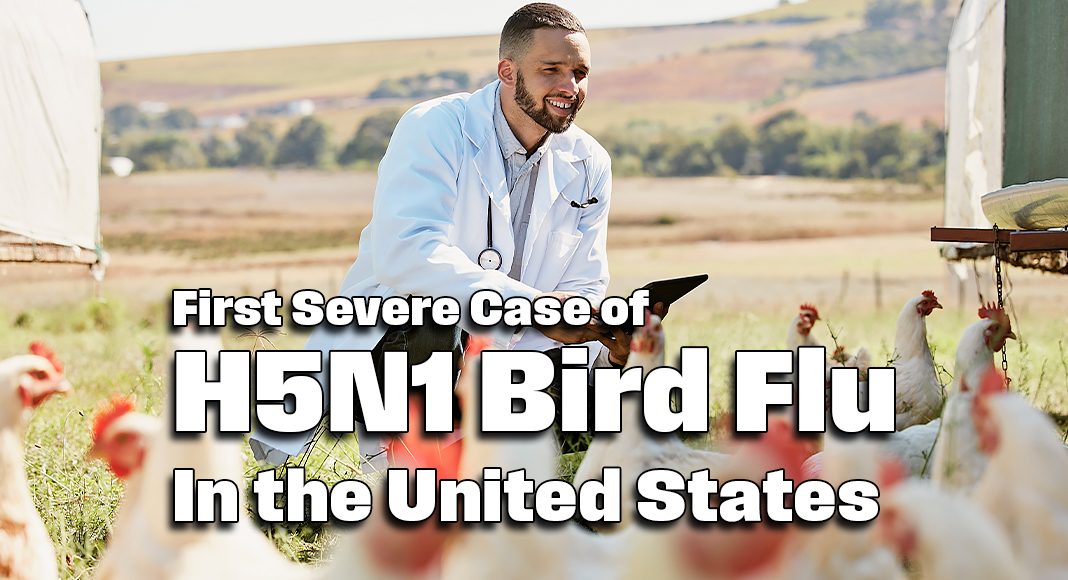
Mega Doctor News
CDC – A patient has been hospitalized with a severe case of avian influenza A(H5N1) virus (“H5N1 bird flu”) infection in Louisiana. This marks the first instance of severe illness linked to the virus in the United States. The case was confirmed by the Centers for Disease Control and Prevention (CDC) on Friday, December 13. Since April 2024, there have been a total of 61 reported human cases of H5 bird flu reported in the United States.
Partial viral genome data of the H5N1 avian influenza virus that infected the patient in Louisiana indicates that the virus belongs to the D1.1 genotype related to other D1.1 viruses recently detected in wild birds and poultry in the United States and in recent human cases in British Columbia, Canada, and Washington state. This H5N1 bird flu genotype is different than the B3.13 genotype detected in dairy cows, sporadic human cases in multiple states, and some poultry outbreaks in the United States. Additional genomic sequencing and efforts to isolate virus from clinical specimens from the patient in Louisiana are underway at CDC.
While an investigation into the source of the infection in Louisiana is ongoing, it has been determined that the patient had exposure to sick and dead birds in backyard flocks. This is the first case of H5N1 bird flu in the U.S. that has been linked to exposure to a backyard flock. A sporadic case of severe H5N1 bird flu illness in a person is not unexpected; avian influenza A(H5N1) virus infection has previously been associated with severe human illness in other countries during 2024 and prior years, including illness resulting in death. No person-to-person spread of H5 bird flu has been detected. This case does not change CDC’s overall assessment of the immediate risk to the public’s health from H5N1 bird flu, which remains low.
This case underscores that, in addition to affected commercial poultry and dairy operations, wild birds and backyard flocks also can be a source of exposure. People with work or recreational exposures to infected animals are at higher risk of infection and should follow CDC’s recommended precautions when around animals that are infected or potentially infected with H5N1 avian influenza virus. This means that backyard flock owners, hunters and other bird enthusiasts should also take precautions.
The best way to prevent H5 bird flu is to avoid exposure whenever possible. Infected birds shed avian influenza A viruses in their saliva, mucous, and feces. Other infected animals may shed avian influenza A viruses in respiratory secretions and other bodily fluids (e.g., in unpasteurized cow milk or ‘raw milk’).
As a general precaution, whenever possible, people should avoid contact with sick or dead animals, in particular wild birds, and poultry.
For individuals with direct/close contact with wild birds or sick or dead poultry or other animals, wear recommended personal protective equipment (PPE). Wild birds can be infected with avian influenza A viruses even if they don’t look sick.
Do not touch surfaces or materials (e.g., animal litter or bedding material) contaminated with saliva, mucous, or animal feces from wild or domestic birds or other animals with confirmed or suspected avian influenza A virus infection.
For more information on H5 bird flu in the U.S. and CDC’s response, including regularly updated case counts, visit the H5 Bird Flu: Current Situation page.
Information Source: CDC









